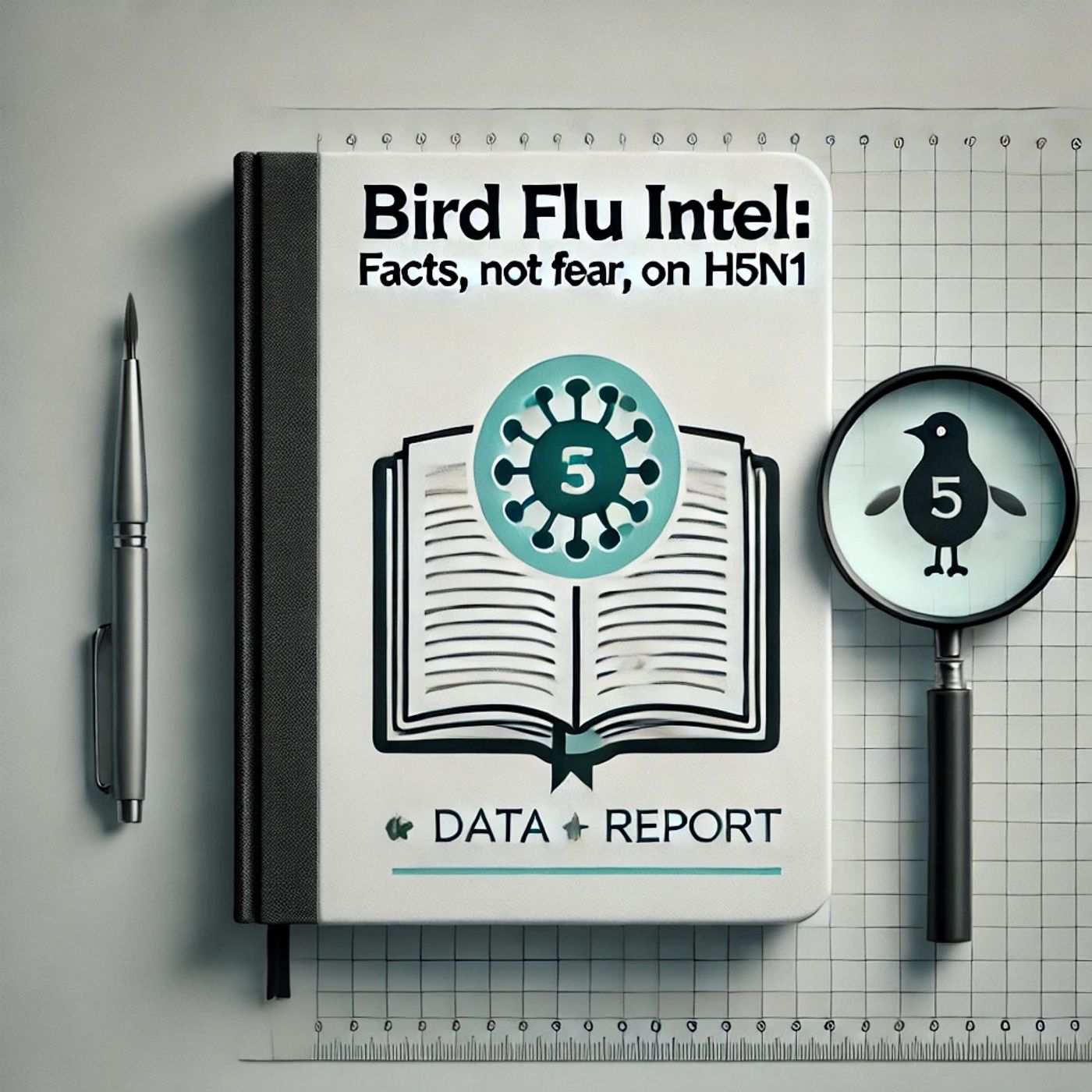Podcast Episode Details
Back to Podcast Episodes
H5N1 Bird Flu: 4 Key Myths Debunked by Experts Low Public Risk Despite Ongoing Monitoring
This is Bird Flu Intel Facts Not Fear on H5N1 your myth-busting podcast where science cuts through the noise
First let’s tackle a few of the biggest myths swirling around about H5N1 bird flu
Myth one H5N1 is easily spreading from person to person Right now that is not the case According to the US Centers for Disease Control and Prevention and the World Health Organization all recent human H5N1 cases globally have been linked to direct contact with infected animals especially poultry There is no evidence that H5N1 is transmitting from human to human in the current outbreak Both the CDC and WHO say public risk remains low
Myth two Eating chicken eggs or milk will give you bird flu The science says otherwise Cleveland Clinic and CDC report that you cannot get H5N1 from properly cooked poultry or eggs or from pasteurized milk Infected flocks are removed from the food supply before products ever reach stores Proper cooking destroys the virus completely
Myth three H5N1 is always deadly While bird flu is devastating in poultry and can be dangerous to certain animals, most recent human cases especially in the US have been mild with symptoms like eye redness or mild respiratory issues Most serious illness has occurred where people had close direct exposure to very sick birds, often in countries with fewer protections However bird flu viruses can mutate quickly so health agencies are on alert for any changes in severity or spread
Myth four Only birds or bird workers need to worry about H5N1 The reality is H5N1 can infect several mammal species—from cats and dogs to cows, foxes, and dolphins But ongoing monitoring by USDA and CDC shows the vast majority of infections in the US are in poultry or dairy workers and people with direct animal exposure For the general public those without close animal contact risk remains very low
How does misinformation on H5N1 spread and why is it harmful Fast-moving stories on social media, alarming headlines, and recycled content from older or overseas outbreaks can easily distort facts Misunderstandings can cause unnecessary panic, discrimination, or even reluctance to follow sound advice False beliefs can also lead to poor decisions, like avoiding safe foods or ignoring real risk factors
So how can you tell fact from fiction First check the source Reputable health organizations such as the CDC, WHO, or your local health department update their bird flu pages frequently Be cautious with dramatic language, anonymous sources, or unsourced claims Second context matters Look for up-to-date information since H5N1 strains, risks, and guidance change over time Finally when in doubt verify across multiple trusted sites
What is the current scientific consensus H5N1 bird flu is a serious threat to birds and some animals but at present poses a low risk to the general public Signs are closely watched for mutations that could make it more contagious or severe for humans but so far this has not happened Scientists agree that human-to-human spread would be a game-changer and global teams are prepared to respond quickly if that occurs
Where do we still have uncertainty Influenza A viruses like H5N1 can mutate in unpredictable ways and affect new species Surveillance is robust but not perfect The impact of future mutations whether the virus could become widespread among people or how long-term animal outbreaks could reshape risks remains unknown That’s why science stays vigilant and adaptive
Thanks for tuning in to Bird Flu Intel Facts Not Fear on H5N1 Come back next week for more clear-eyed analysis This has been a Quiet Please production For more see QuietPlease dot AI
For more http://www.quietplease.ai
Get the best deals https://amzn.to/3ODvOta
Published on 2 weeks, 3 days ago